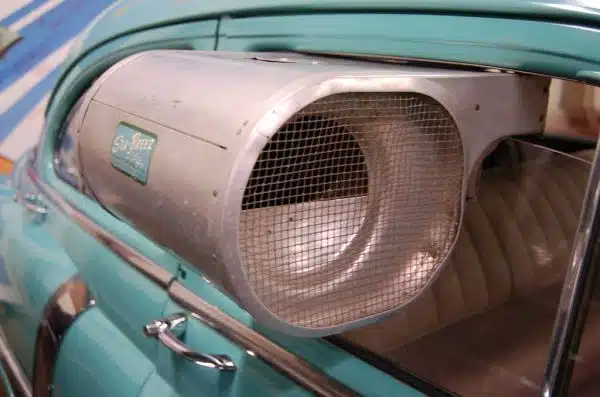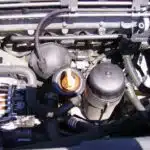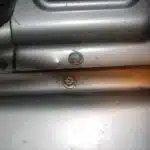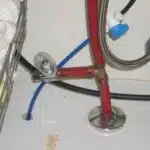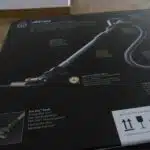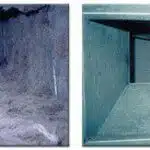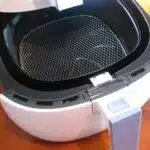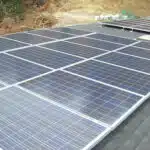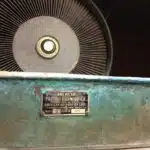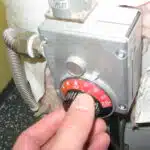Maintaining the cleanliness of a window air conditioner is crucial for ensuring its optimal performance and longevity. Over time, dust, dirt, and debris accumulate on the unit’s filters, coils, and fins, obstructing airflow and hindering its cooling capacity. Neglecting to clean your air conditioner not only reduces its efficiency but also leads to increased energy bills and potential breakdowns. As an HVAC technician, I have seen first-hand how lack of maintenance can damage a system and result in costly repairs or replacements.
In this article, we will discuss the proper steps to clean a window air conditioner effectively. We will cover everything from preparing the unit for cleaning to disassembling it for deep cleaning. By following these guidelines, you can ensure that your air conditioner remains clean and functioning correctly year-round. Whether you are a homeowner looking to save money on energy bills or an HVAC technician seeking to provide top-notch service to clients, this guide will equip you with the knowledge necessary to maintain your window air conditioner efficiently.
Understanding The Importance Of Regular Maintenance
As a skilled HVAC technician, I have witnessed the aftermath of neglecting an air conditioner’s maintenance. Just like how our bodies need regular check-ups to function well, air conditioners require proper care and attention to operate efficiently. It is essential to understand the importance of regular maintenance for your window air conditioner.
Regular maintenance has several benefits that outweigh its drawbacks. For instance, it prolongs the lifespan of your unit, saves energy costs by ensuring optimal performance, and enhances indoor air quality by reducing allergens and pollutants. Conversely, neglecting regular maintenance can result in costly repair bills or even replacement of your unit. Therefore, investing in routine maintenance is crucial for every responsible homeowner.
When it comes to maintaining a window air conditioner, you have two options: self-maintenance or professional maintenance. Self-maintenance involves cleaning filters frequently and checking for any visible damage on the unit’s exterior. On the other hand, professional maintenance entails seeking assistance from qualified technicians who possess vast experience in repairing and maintaining various types of air conditioning units. While self-maintenance may seem cost-effective at first glance, it may not be comprehensive enough to identify underlying problems that could escalate into costly repairs down the line. Professional maintenance provides a more thorough examination and ensures all parts are working correctly to guarantee optimal performance throughout the year.
Preparing For Cleaning
Before you start cleaning your window air conditioner, it is important to take several safety precautions. First, make sure that the appliance is powered off and unplugged from the electrical outlet. This will prevent any electrical shock or damage to the unit. Secondly, wear protective gloves and clothing to avoid contact with any chemicals used in the cleaning process. Lastly, make sure that you are working in a well-ventilated area to prevent inhalation of harmful fumes.
To effectively clean your window air conditioner, you will need several necessary tools. These include a vacuum cleaner with a soft brush attachment, a spray bottle filled with water and mild detergent solution, and a clean cloth or sponge. You may also need a fin comb with different sized teeth to straighten any bent fins on the condenser coils. It is important to have all of these tools on hand before starting the cleaning process.
Once you have taken the necessary safety precautions and gathered all of your tools, you can begin preparing for cleaning your window air conditioner. Start by removing any filters or covers from the appliance and placing them aside for later cleaning. Use your vacuum cleaner to remove any loose debris from the unit’s interior and exterior surfaces. Afterward, use your spray bottle filled with detergent solution to wipe down all surfaces thoroughly, making sure to reach every nook and cranny of the unit.
Do not forget that turning off power should be done before proceeding with other steps in order to avoid accidents or injuries while cleaning your window air conditioner. Once you have completed this preparatory section, let us proceed to turning off power so we can start disassembling parts of the unit for deeper cleaning purposes.
Turning Off The Power
Before cleaning a window air conditioner, it is important to turn off the power. This will ensure that you do not accidentally electrocute yourself or cause any damage to the unit. The first step in turning off the power is to unplug the unit from the electrical outlet. It is also recommended that you turn off the circuit breaker for added safety.
The importance of safety cannot be overstated when working on any electrical appliance, including window air conditioners. Even though these units are relatively small and compact, they can still pose a serious risk if not handled properly. This is why it is crucial to take every precaution possible before beginning any maintenance or repair work.
After unplugging the unit and turning off the circuit breaker, you can move on to the next step of removing the air filter. This component plays an important role in keeping your unit running smoothly, so it is essential that you clean it regularly. By following these steps in order and taking care to prioritize safety at all times, you can keep your window air conditioner in top-notch condition for years to come.
Removing The Air Filter
- To locate the air filter, it is necessary to identify the air intake grille in the air conditioner and remove the securing screws.
- Once the air filter is removed, it should be inspected for dust and debris and any visible blockages should be removed.
- The filter should then be rinsed thoroughly in warm, soapy water to remove any remaining dirt or dust particles.
- After drying, the air filter should be reinstalled securely to ensure that the air conditioner is operating correctly.
Locating The Filter
When it comes to cleaning a window air conditioner, one of the most important steps is removing and cleaning the air filter. However, before you can do that, you need to know where the filter is located. The location of the filter can vary depending on the model and make of your air conditioner, but generally, it will be located behind the front panel or grille of the unit.
There are different types of filters used in window air conditioners, including mesh and pleated filters. Mesh filters are made of a thin metal or plastic mesh material and are typically washable and reusable. Pleated filters, on the other hand, are made of paper or synthetic fibers and are disposable. It’s important to check your user manual to determine what type of filter your unit uses so that you can properly clean or replace it.
To locate the filter in your window air conditioner, start by turning off the unit and unplugging it from the electrical outlet. Remove any screws or clips holding the front panel or grille in place and carefully remove it from the unit. Look for a rectangular slot or compartment behind the panel where the filter should be located. If you’re having trouble locating it, refer to your user manual for specific instructions on how to remove and replace the filter in your particular model.
In conclusion, knowing how to locate and remove your air conditioner’s filter is an essential part of keeping your unit running smoothly and efficiently. By understanding what type of filter your unit uses and where to find it, you’ll be able to easily clean or replace it as needed. Taking proper care of your air conditioner’s filter will not only help improve its performance but also ensure cleaner indoor air quality for you and those around you.
Cleaning The Filter
After successfully locating and removing the air filter of your window air conditioner, the next step in maintaining its efficiency is to clean it. The frequency at which you should clean your air filter depends on various factors such as the amount of usage, indoor air quality, and the type of filter used. A general rule of thumb is to clean or replace the filter every 1-3 months for optimal performance.
Cleaning a reusable mesh filter involves using a cleaning solution that’s safe for the material. Avoid using harsh chemicals that could damage or corrode the mesh. Instead, use a mild soap or detergent mixed with warm water to wash away any dirt and debris from both sides of the filter. Rinse thoroughly with water and let it dry completely before re-installing it into your air conditioner.
If your window air conditioner uses a disposable pleated filter, replacement is necessary instead of cleaning. Pleated filters are designed to trap more pollutants than mesh filters, but they are not washable or reusable. When replacing pleated filters, make sure to purchase one that meets or exceeds your unit’s recommended MERV (Minimum Efficiency Reporting Value) rating for better filtration efficiency. Keeping up with your maintenance schedule is crucial in extending the lifespan of your window air conditioner while also ensuring optimal cooling performance throughout its service life.
Cleaning The Filter
As an HVAC technician, it is important for you to know the significance of cleaning the filter in a window air conditioner. The filter is responsible for trapping dust, dirt, and other particles from entering the room. Over time, these particles accumulate inside the filter which can lead to reduced airflow and decreased cooling efficiency. Therefore, it is crucial to clean your window air conditioner’s filter regularly.
The frequency of cleaning your air conditioner’s filter depends on factors such as usage and environment. For example, if you use your unit regularly or live in a dusty area, then you may need to clean it more frequently. In general, it is recommended to clean your window air conditioner’s filter once every two weeks during peak season and once every month during off-season.
When it comes to cleaning solution options for your window air conditioner’s filter, there are several choices available. You can use either warm water with mild detergent or a mixture of equal parts water and vinegar. It is essential to avoid using harsh chemicals or bleach as they can damage the filter’s fibers. After washing with a cleaning solution, make sure to rinse thoroughly with water and let it dry completely before reinstalling it back into the unit.
To proceed with removing the outer cover of your window air conditioner unit, first ensure that you unplug the power supply from the unit before starting any work on it. Then locate the screws holding the cover in place and remove them using a screwdriver. Gently pull out on the cover until you feel resistance – this means that there are clips securing it in place which may require some additional force to release them. Once released, carefully remove the cover without damaging any wires or components inside the unit.
Removing The Outer Cover
To remove the outer cover of a window air conditioner, you will need to first ensure that the unit is unplugged. This is an important safety precaution to prevent any electrical accidents or injuries. Once you have unplugged the unit, locate the screws or clips that hold the outer cover in place. These are typically found on the sides or top of the unit.
Using a screwdriver or pliers, carefully remove the screws or release the clips holding the outer cover in place. Be sure to set these aside in a safe location where they won’t get lost. With the screws or clips removed, gently pull off the outer cover and set it aside. You should now have access to clean the coils and fins inside your window air conditioner.
Before cleaning your window air conditioner, it’s important to gather all necessary cleaning products and equipment. This may include a vacuum cleaner with a brush attachment, a soft-bristled brush, mild detergent solution, and a cloth for wiping down surfaces. Additionally, be sure to wear gloves and protective eyewear during this process to avoid any potential injury from sharp parts or cleaning solutions. Following these safety precautions will ensure that you can effectively and safely clean your window air conditioner without any incident.
Transition: Now that we’ve safely removed the outer cover of our window air conditioner and gathered all necessary cleaning supplies, we can move on to cleaning its coils and fins for optimal performance.
Cleaning The Coils And Fins
After removing the filter, it is important to clean the coils and fins of the window air conditioner. Dirt and debris can accumulate on these surfaces, causing reduced airflow and decreased efficiency. Additionally, dirty coils can lead to freezing of the air conditioner.
Coil cleaning techniques are varied depending on the level of dirt accumulation. For light buildup, simply brushing with a soft brush or vacuuming may suffice. For heavier buildup, a coil cleaner solution can be used according to manufacturer instructions. It is important not to use abrasive materials or high-pressure water as this can damage the coils.
Fin maintenance tips include straightening any bent fins with a fin comb, which allows for better airflow and increased efficiency. Regular cleaning of the fins with a soft brush or vacuum will also prevent dirt buildup. Finally, ensuring that there is no obstruction in front of the air conditioner will allow for optimal airflow and overall system performance.
Next up is using a fin comb to straighten out any bent fins for better airflow.
Using A Fin Comb
Identifying clogged fins on a window air conditioner requires a visual inspection of the unit. Clogged fins can reduce the air flow and impede the unit’s performance. Cleaning the clogged fins is done by using a fin comb, which is a tool designed to remove dirt and debris from the fins. Fin combs are available in a variety of sizes to match the size of the window air conditioner’s fins.
Identifying Clogged Fins
In order to properly clean a window air conditioner, it is important to identify signs of blockage in its fins. One common sign of clogged fins is reduced airflow, which can lead to inefficient cooling and increased energy consumption. Another indicator is the presence of dirt or debris on the surface of the fins, which can obstruct the flow of air through the unit.
To prevent clogged fins in the first place, it is recommended to regularly clean and maintain your window air conditioner. This includes removing any dirt or debris from the unit’s exterior and interior surfaces, as well as cleaning or replacing the filter as needed. Additionally, using a fin comb on a regular basis can help to prevent buildup in the fins and ensure proper airflow throughout your air conditioning system.
When using a fin comb, it is important to carefully follow instructions and use gentle pressure when working with delicate fins. Starting at one end of the unit, work your way across each row of fins and gently comb out any blockages or debris that may be present. By taking these steps to identify and prevent clogged fins in your window air conditioner, you can ensure optimal performance and efficiency from your cooling system for years to come.
Cleaning Clogged Fins
After identifying the signs of clogged fins in a window air conditioner, the next step is to clean them using a fin comb. Cleaning fin combs are essential in maintaining the optimal performance of an air conditioning system. It is important to use a fin comb that matches the size and spacing of the fins on your unit to prevent damage.
To start cleaning clogged fins, turn off the power supply and remove any debris or dirt from the surface of the fins using a soft brush or vacuum. Then, gently slide the fin comb over each row of fins, making sure not to bend or damage them. The process should be repeated until all blockages have been removed.
Preventing future buildup in your air conditioning system is crucial for its longevity and efficiency. One way to do this is by regularly cleaning and maintaining your unit. This includes cleaning or replacing filters, removing any debris from the exterior surfaces, and using a fin comb as needed. By taking these steps, you can ensure optimal performance from your window air conditioner for years to come.
Cleaning The Drain Pan
The drain pan is an essential part of your window air conditioner, as it collects water that drips down from the evaporator coils. Over time, this can lead to clogs and mold growth if not cleaned regularly. Preventing clogs and avoiding mold is easy, but it requires some basic maintenance.
Firstly, turn off your air conditioner and unplug it from the power source. Locate the drain pan under the unit and remove any debris or standing water. Once you have removed all debris, rinse the pan with warm water and mild detergent to remove any remaining dirt or grime. Use a soft-bristled brush to scrub stubborn stains or buildup.
Next, use a disinfectant spray to kill any remaining bacteria or mold spores. Allow the disinfectant to sit for at least 10 minutes before rinsing the pan again with clean water. Dry the pan completely before replacing it in your air conditioner.
By following these simple steps, you can easily prevent clogs and avoid mold growth in your window air conditioner’s drain pan. Regular maintenance not only ensures optimal performance but also extends the life of your unit.
Transition: Now that we have cleaned the drain pan, it’s time to reassemble our unit properly.
Reassembling The Unit
After successfully cleaning your window air conditioner, it’s time to start putting the pieces back together. It’s important to reassemble the unit correctly to avoid any potential damage or issues down the line. As a technician, I have seen some common mistakes that people make when reassembling their units, but don’t worry – I’ll provide you with some tips so you can avoid them.
Firstly, make sure that all the components are dry before reassembling. This is crucial as moisture can lead to mold and other issues. Start by replacing the front grille, ensuring that it is securely in place. Next, replace the filter and any other removable parts such as side panels or curtains.
When reassembling your unit, it’s important not to force anything into place or overtighten screws or bolts. Doing so can cause unnecessary strain on the unit and potentially damage it over time. Here are some additional tips to keep in mind:
- Double-check that all parts are properly aligned before tightening screws
- Keep screws and bolts organized for easy reassembly
- Use a level to ensure that the unit is sitting straight
- Consider replacing any worn or damaged parts while you have the unit disassembled
- Take photos of each step of disassembly to aid in reassembly
By following these reassembling tips and avoiding common mistakes, you’ll be able to get your window air conditioner up and running again in no time. Next up, we’ll discuss how to reinstall the air filter for optimal performance.
Reinstalling The Air Filter
- In order to reinstall the air filter of a window air conditioner, the user must first locate the filter in the unit’s air intake.
- After locating the air filter, the user should remove the old filter, taking care to dispose of it properly.
- The air filter should then be replaced with a new filter, making sure that the filter is the correct size for the unit.
- Finally, the user should check for any potential obstructions to airflow, such as dirt and dust, before finally reinstalling the air filter.
Finding The Air Filter
When it comes to cleaning a window air conditioner, finding the air filter is crucial. The air filter is responsible for trapping dust, dirt, and other debris from entering your home. Therefore, locating the air filter should be the first step in maintaining your unit’s efficiency. Most window AC models have their air filters located behind the front grille or near the evaporator coils. You may need to refer to your unit’s manual for specific directions on where to find it.
Once you’ve located the air filter, it’s time to replace it. Over time, the filter becomes clogged with dirt and dust, which can lead to decreased airflow and reduced efficiency of your unit. Depending on how frequently you use your AC, it’s recommended that you replace the filter every three months or more often if you live in a dusty environment. Before replacing the filter, make sure to turn off your AC and unplug it from the electrical outlet.
To reinstall the air filter, simply remove the old one and insert a new one in its place. Make sure that the new filter fits securely into its slot and that there are no gaps around its edges. A loose-fitting air filter can allow debris to bypass it and enter your home, negating all of your hard work in cleaning your unit. Once you’ve replaced the filter, turn on your AC and enjoy cleaner, cooler air in your home without worrying about increased energy bills or decreased efficiency due to dirty filters.
Replacing The Air Filter
As an HVAC technician, it is crucial to emphasize the importance of replacing the air filter in a window air conditioner. Neglecting this task can lead to poor indoor air quality, decreased efficiency of the unit, and increased energy bills. One of the signs of a dirty air filter is reduced airflow, which can cause your AC to work harder than necessary and result in higher energy consumption.
To replace the air filter, start by turning off your AC and unplugging it from the electrical outlet. Locate the old filter, which is typically behind the front grille or near the evaporator coils. Remove the old filter and insert a new one in its place. Ensure that the new filter fits securely into its slot and that there are no gaps around its edges. A loose-fitting air filter can allow debris to bypass it and enter your home, negating all of your hard work in cleaning your unit.
After reinstalling the air filter, turn on your AC and enjoy cleaner, cooler air in your home. As an HVAC technician, I highly recommend replacing your unit’s air filter every three months or more often if you live in a dusty environment. This will not only improve indoor air quality but also help maintain your unit’s efficiency and prolong its lifespan. Remember that regular maintenance is key to keeping your window AC running smoothly for years to come.
Testing The Unit
After cleaning your window air conditioner, it is important to test the unit’s performance. This step is crucial in ensuring that your AC unit functions optimally before reinstalling it. To perform this test, turn on your air conditioner and wait for a few minutes for it to cool down the room. Then, check the temperature of the air coming out of the unit using a thermometer.
If you notice any issues with your air conditioner’s performance during testing, it could indicate underlying problems that need to be addressed. Some common issues include poor airflow, uneven cooling, or strange noises coming from the unit. Identifying these issues early on can help prevent more serious problems from arising in the future.
Regular testing and maintenance of your window air conditioner can help extend its lifespan and ensure that it operates at peak efficiency. By identifying any issues during testing and taking corrective action as necessary, you can keep your AC running smoothly and avoid costly repairs down the road.
Moving forward, there are some tips you can follow to maintain your air conditioner and prevent issues from occurring in the first place. These include regularly replacing filters, keeping outdoor condenser units clean and free of debris, and scheduling professional maintenance checks at least once a year. By following these guidelines, you can keep your AC functioning properly for years to come.
Tips For Maintaining Your Air Conditioner
- Cleaning the air filters of your air conditioner is essential for efficient operation and should be done at least every two weeks.
- Checking the seals around the unit for damage should be done at least twice a year to ensure that the unit is not leaking cold air.
- Proper drainage of the air conditioner is key to preventing water damage. The drain pan should be checked regularly for clogs and debris.
- Keeping the outside of the unit clean is essential for optimal performance. Dirt, dust and debris should be removed with a soft brush or vacuum.
- Unclogging the condensate drain lines of your air conditioner should be done regularly to prevent overflow.
- Inspecting the air handler and evaporator coils is an important part of regular maintenance as they can become clogged or dirty over time.
Clean Filters
When it comes to maintaining a window air conditioner, one of the most important tasks is cleaning the filters. As an HVAC technician, I have seen firsthand how dirty filters can negatively impact the performance and efficiency of an air conditioning unit. To paint a picture for you, imagine trying to breathe through a clogged straw – that’s what your AC unit is doing when the filters are dirty.
To maintain optimal air quality and improve the overall performance of your window air conditioner, it is essential to replace or clean the filters on a regular basis. Dirty filters can cause dust and debris to circulate throughout your home, which can be harmful to those with allergies or respiratory issues. Additionally, dirty filters put extra strain on your AC unit’s motor and can lead to increased energy consumption.
In conclusion, regular filter replacement or cleaning is crucial for proper maintenance of your window air conditioner. By doing so, you not only improve the indoor air quality but also ensure that your AC unit runs efficiently and effectively. As a technician who values serving others, I highly recommend making filter maintenance a part of your routine upkeep for your window AC unit.
Check Seals
Another essential tip for maintaining your window air conditioner is to inspect the seals regularly. Seals around the unit’s frame and between the air conditioner and the window are crucial in keeping hot air out of your home. Over time, these seals can become damaged or worn, allowing warm air to seep into your home and reducing the efficiency of your AC unit. As an HVAC technician, I have seen how faulty seals can lead to increased energy consumption and higher electric bills.
To ensure that your air conditioner is working properly, it is essential to inspect the seals around the unit’s frame and replace them if necessary. You should also check the seal between the AC unit and the window to make sure that there are no gaps or cracks. If you notice any damage or wear on any of these seals, it is best to replace them as soon as possible. Doing so will not only improve energy efficiency but also keep your home cooler during hot summer months.
In conclusion, checking and replacing seals around your window air conditioner is just as important as cleaning or replacing filters. Faulty seals can cause increased energy consumption, higher electric bills, and decreased cooling performance. As an HVAC technician who values serving others, I highly recommend adding seal inspection to your routine maintenance tasks for optimal AC performance.
Monitor Drainage
Proper maintenance of your air conditioner is vital to ensure that it operates efficiently and effectively. Neglecting routine maintenance can lead to reduced cooling performance, increased energy consumption, and higher electric bills. As an HVAC technician, I recommend that you make inspecting and monitoring the drainage of your AC unit a part of your regular maintenance tasks.
Checking for clogs in the drain line is crucial in maintaining proper drainage technique. Over time, dirt, debris, and other impurities can accumulate in the drain line, causing it to become clogged. A clogged drain line can cause water to back up into the AC unit or even leak into your home. Therefore, it is essential to check for clogs regularly and clear them out if necessary.
Another important aspect of monitoring drainage is ensuring that the condensate drain pan is functioning correctly. The drain pan collects water that drips from the evaporator coil during operation. If the pan becomes cracked or damaged, it can cause water to leak into your home or damage the AC unit itself. Therefore, inspecting the drain pan for damage and replacing it if necessary will help prevent any potential problems with proper drainage.
In conclusion, checking for clogs in the drain line and ensuring that the condensate drain pan is functioning correctly are critical components of maintaining proper drainage technique in your air conditioning unit. Neglecting these tasks can lead to reduced efficiency and increased repair costs down the road. As an HVAC technician who values serving others, I highly recommend adding these steps to your routine maintenance tasks for optimal AC performance.
Troubleshooting Common Issues
Maintaining your air conditioner is crucial to ensuring it runs efficiently and lasts for years. One important aspect of maintenance is cleaning the window air conditioner regularly. This will not only improve its performance but also prevent any potential health hazards caused by mold or bacteria buildup.
To clean a window air conditioner, start by turning off the power supply and unplugging it from the wall. Remove the front panel and filter and wash them with warm water and mild detergent. Use a soft brush or vacuum to remove any dirt or debris from the coils, fins, and drainage system. Once clean, reassemble everything in reverse order.
If you encounter any issues while cleaning your window air conditioner such as troubleshooting compressor issues or fixing electrical problems, it’s best to call a professional technician for assistance. Attempting to fix these issues yourself could cause further damage to your unit or even result in injury. It’s always better to be safe than sorry when dealing with technical problems.
Things to remember:
- Regular cleaning of your window air conditioner can improve its performance.
- Turn off the power supply before starting the cleaning process.
- Use mild detergent and warm water to wash the front panel and filter.
- If you encounter any issues during cleaning, call a professional technician for assistance instead of attempting DIY repairs that could lead to further damage or injury.
When To Call A Professional
Hiring professionals to clean your window air conditioner can be a wise choice, especially if you lack the necessary tools and expertise. HVAC technicians have the right knowledge and experience to thoroughly clean your unit, ensuring that it operates efficiently and safely. They also have access to specialized cleaning agents that can effectively remove dirt, dust, and other contaminants from your AC.
However, hiring professionals can also be costly, especially if you need regular maintenance or cleaning services. If you want to save money, you can opt for DIY cleaning techniques instead. These methods are relatively easy and inexpensive, and they can help keep your air conditioner in good condition. Some of the most common DIY cleaning techniques include using a vacuum cleaner or soft-bristled brush to remove debris from the filter and coils.
In summary, whether you choose to hire professionals or use DIY cleaning techniques for your window air conditioner depends on several factors such as budget, time constraints, expertise, and personal preferences. If you have the means and skills to do it yourself, then go ahead and try these techniques. But if you’re not confident about doing it on your own or simply don’t have the time or resources to spare, then consider hiring professionals instead. Ultimately, what matters most is that your AC is well-maintained and functioning properly so that you can enjoy cool and comfortable indoor air all year round.
Conclusion
Regular maintenance of a window air conditioner is crucial for optimal performance and avoiding costly repairs. Before cleaning, turn off the power supply to avoid any electrical hazards. Remove the air filter and clean it with water and mild detergent. Inspect the coils and fins for dirt buildup and use a soft brush to remove any debris. Test the unit after cleaning to ensure it’s functioning correctly.
Remember to check your air conditioner at least once a month during summers and replace or clean filters as needed. Keep the surrounding area free from dust and debris to prevent clogging of the filter. If you notice any unusual sounds or smells, troubleshoot common issues like low refrigerant levels or faulty motors before calling a professional.
Maintaining your window air conditioner is like a heart pumping fresh air into your home, keeping you cool and comfortable during hot summers. Just like how regular exercise keeps your heart healthy, routine cleaning of your air conditioner keeps it in top shape. Neglecting its care can lead to decreased efficiency, increased energy consumption, or even complete failure. As an HVAC technician, I cannot stress enough the importance of following proper maintenance procedures to extend the lifespan of your equipment and keep your environment comfortable year-round!
Image Credits
- “Sea Breeze car window air conditioner R E Olds Museum 2-9-2008 181 N” by Corvair Owner (featured)

